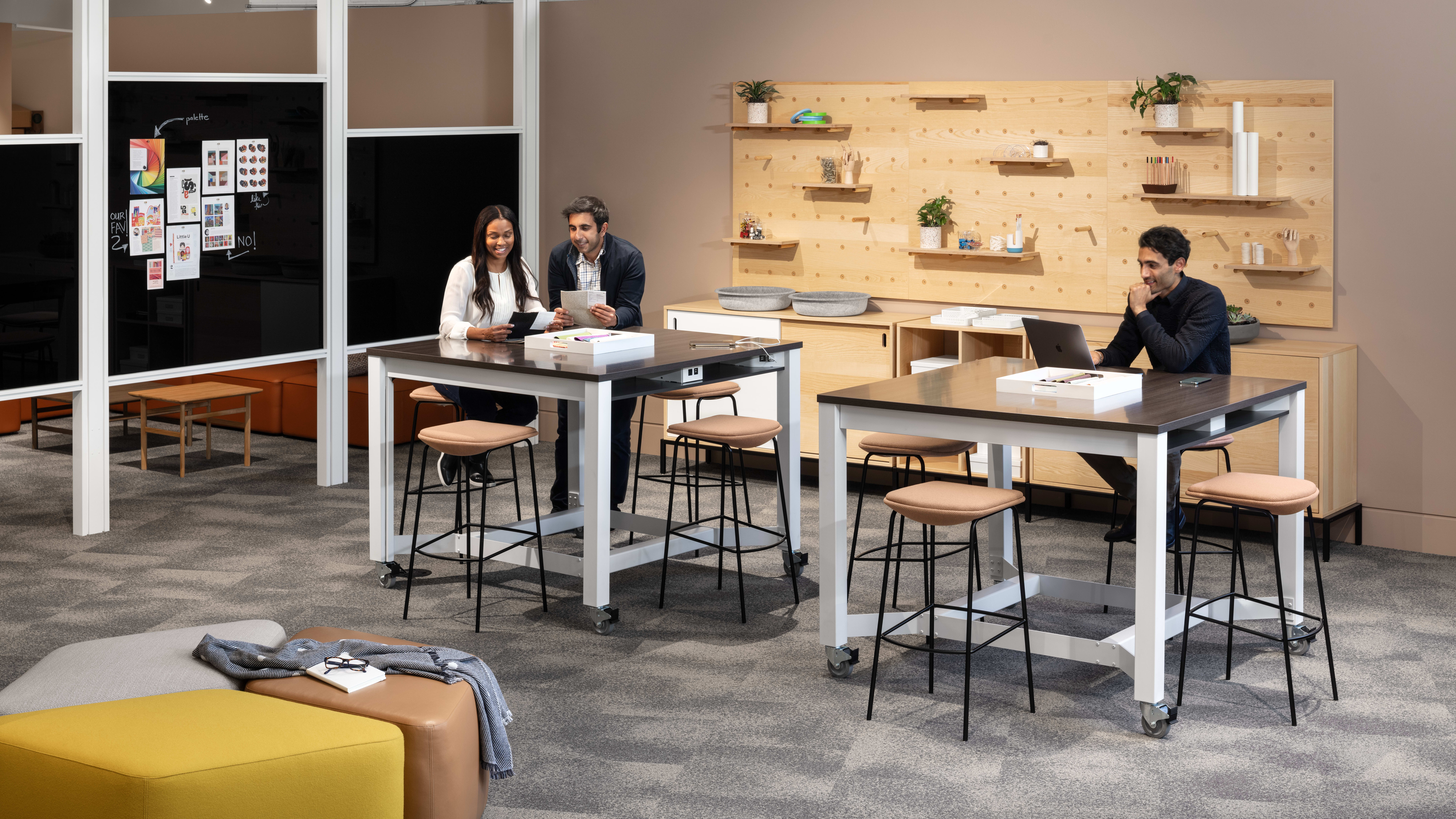Download the PDF Copy
Download
Lots of on-point and insightful discussions are happening these days about what’s next in workplace strategy and design.
Our contribution is to call out what we believe to be the most important things to get right. Taken together, these topics help us focus on the combination of what matters most.
1. Double down on people-first cultural evolution
Don’t gloss over or under-estimate mental health, trauma, or grief; do dial-up engagement and communication to strengthen trust and resilience.
We’ve been living with despairingly high levels of uncertainty and diminished interactions with others since the COVID outbreak and may be doing so for the foreseeable future as we continue to experience starts and stops. Every one of us has our visions of our and our loved ones’ futures irrevocably altered and are mourning the loss of lives, past expectations, and meaningful connections. Relationally-enriched environments—with positive human connections—and self-regulating techniques (i.e., calming movements) are at the core of healing trauma, loss, and loneliness. High levels of consistent engagement and communication with workers help rekindle interpersonal connections and trust in each other and the organization.
READ MORE
Burnout and psychological safety, in particular, are now understood to be organizational issues and not simply insufficient self-care. A recent series of articles from Harvard Business Review suggests that organizations “Instill a sense of purpose, better manage workloads, make it ok to talk about mental health; and (encourage) an empathic manager…positive emotions like trust, curiosity, confidence, and inspiration broaden the mind and help us build psychological, social, and physical resources.” While not a replacement for therapy or counseling, involving employees in identifying beneficial elements and developing approaches to mitigate burnout will demonstrate its prioritization, de-stigmatize needing help, and improve relevance, value, and buy-in.
Welcome new worker expectations – many are backed by science and deliver significant ROI to their organizations.
Research studies link worker expectations—like a supportive empathic manager, greater autonomy, and the prioritization of mental and physical health—to better team productivity, higher percentages of high performers, and stronger financial performance in those organizations that meet those expectations.
READ MORE
2. Promote the purpose of the office to nurture connections and interactions.
The highest and best use of the office is to strengthen social cohesion.
Several years ago, we sponsored research that found social cohesion to have THE highest (scientifically proven) correlation to knowledge worker productivity—specifically team productivity. More recently, our colleague Jeff Leitner also identified studies that suggest that social cohesion is also highly correlated to individual performance, motivation, engagement, and learning outcomes; it also helps workers manage fear, stress, and anxiety; which in turn reduces burnout.
READ MORE
Workplace design can help organizations to strengthen social cohesion.
Social cohesion has four dimensions: Fairness (read: equity), Authenticity, Interdependence, and Belonging. Both the design process and the resulting design recommendations can promote these qualities. For example, activity-based planning is inherently more equitable than status or one-size-fits-all as a way of allocating space. It also encourages/enables users to select the most supportive/conducive space to perform a given task and is one step toward supporting a neurodiverse workforce. Additionally, involving users in co-creating their activity-based neighborhoods increases feelings of interdependence and belonging and can inspire a sense of ongoing stewardship.
READ MORE
Social connection and ideation/development/problem-solving are just easier and more effective face-to-face in appropriately designed settings.
While distributed/hybrid work inherently gives workers more places to work—office, home, coworking, coffee shop, etc.—and the autonomy to come and go as they need to, a tech and resource-rich space is the optimal place to do complex collaborative activities: problem-solving, idea generation, process improvements, etc. This in turn also enables rebuilding interpersonal connections that foster interdependence and a sense of belonging. At the same time, it’s important to create as equitable an experience as possible to ensure all participants – regardless of their location - feel equitably and fully engaged and included.
READ MORE
3. Intentionally Design with Adaptability in Mind
Organizations will go through a series of “shakedown cruises.”
Even with all the best intentions, solid research, and inclusive discussions about how things might work once folks come back, workers will very likely spend several months experimenting with distributed/hybrid work patterns, free-address, technology, and new team norms. And managers will learn to support them more effectively. Plan for it.
READ MORE
Workers’ behaviors and utilization tracking data will tell us how they’re using the office over time.
And how the office is, in turn, supporting their needs and preferences. Data analytics will tell us what spaces are over-used and under-used, and which spaces are not supporting workers as expected. This provides organizations the opportunity to make the physical changes that will “adjust the mix” - optimizing user experiences and space utilization in the short term – during the ‘shakedown cruise’ - and into the future.
READ MORE
As a “hedge” against uncertainty, workplaces should be designed for continuous improvement.
Consider using modular planning and a thoughtful “spatial kit of parts” that minimizes the effort and disruption of reconfigurations as organizations adjust the mix of spaces they need over time. Even after the shakedown cruise period, there will be internal changes and outside events that will require the workplace to evolve.
READ MORE




